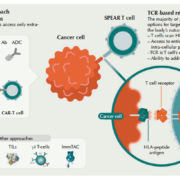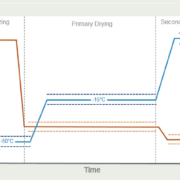Financial pressure on Big Pharma and biotechs increases the need for drug developers to outsource their development and manufacturing capabilities. The CDMO and CRO sector, which is further consolidating through M&A, looks well set for continued growth. As developers have to balance the need to reduce their development risk with time to market or – for biotechs – time to next financing, contract manufacturing and contract research companies clearly favour offering fully integrated services.
ADVERTISEMENT
Since reports that blood cancer response rates to T cells carrying chimeric antigen receptors (CARs) exceed 80%, investors have been laying bets on CAR-T cell approaches. In August, the first two therapies hit European markets in a head-to-head race to be the number one next-gen cancer therapy. So will CAR-T cell treatment really take pole position? Or will alternatives like TCR-based cell therapy or multivalent antibody-T cell engagers leave them in the dust?
Answering the increasing demand for novel fully human antibodies in immunotherapy, German biotech pioneer YUMAB GmbH accelerates drug discovery and development with a comprehensive and versatile technology platform.
Up to now, researchers believed that lung remodeling follows an autoimmune inflammation triggered by components of the extracellular matrix. In August, British scientists provided a more accurate view of the processes in the lung tissue, opening up a way to optimise failed mid-stage clinical candidates.
As the global demand for injectables grows, so does the demand for innovative delivery systems. For lyophilised forms, dual-chamber systems offer advantages. They have been on the market since the mid-1980s, mainly for emergency or chronic medication. The systems have been developed for the convenience of the patients/caregivers, but they also offer benefits for the pharma/biotech companies in regards to low residual volume and increased API yield.
Is synthetic biology on the cusp of unlocking the next industrial revolution? A major roadblock is the ability to synthesise DNA for R&D in ways that are both cheap and efficient. Established players in the field believe the answer lies in miniaturising standard chemical processes and running them in parallel systems. But the new kids on the block are betting on a completely new process that involves enzymes.
The demand for the fast and robust development of manufacturing cell lines is ever growing, with an increasing number of therapeutic proteins in development. To fulfill these needs, Celonic engineered the cell line kit CHOvolution, which equips users with everything required for the development of mammalian cell lines and provides an integrated support system for assistance.
The Innovative Medicines Initiative 2 (IMI2) has launched a new Antimicrobial Resistance Accelerator Programme following on the heels of its outgoing NewDrugs4BadBugs programme.
Roughly 150 life science professionals met at the 5th Biotech Days to discuss the latest progress in bioprocess intensification.
Integrating the disparate stages of drug development is the most time and cost-efficient way of turning a promising candidate compound into a pharmaceutical product. A CDMO that offers coordinated end-to-end services simplifies oversight.




![EB_Autumn_2018_YUMAB.jpg Reference [1]?Schafer, S. et al. Nature 552, 110115 (2017)](https://european-biotechnology.com/wp-content/uploads/2024/04/EB_Autumn_2018_YUMAB-180x180.jpg)





